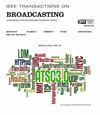一次训练全精:基于域相关退化描述的无参考点云质量评估
IF 4.8
1区 计算机科学
Q2 ENGINEERING, ELECTRICAL & ELECTRONIC
引用次数: 0
摘要
点云的视觉质量在沉浸式媒体的开发和传播中起着至关重要的作用。因此,研究点云质量评估(PCQA)有助于促进沉浸式媒体应用,包括虚拟现实和增强现实应用。由于参考点云在很多情况下是不可用的,因此无参考度量(NR)成为研究热点。现有的NR方法训练困难。为了解决这一问题,我们提出了一种新的NR-PCQA方法,即基于域相关退化描述的点云质量评估(D3-PCQA)。首先,我们通过使用核脊回归模型推导每个模块的函数来证明我们模型的可解释性。具体来说,质量评估可以被描述为从分散的感知域(反映主观感知)到有序的质量域(反映平均意见得分)的飞跃。其次,为了减少显著的域差异,我们基于人类视觉系统(HVS)的洞察力,通过考虑位于感知域的样本之间的域相关性并学习结构化的潜在空间,建立了一个中间域,即描述域。从学习到的潜空间中提取锚点特征作为跨域辅助信息,促进域转换。此外,新建立的描述域将NR-PCQA问题分解为两个相关的阶段。这些阶段包括一个分类阶段,给出对点云的退化描述,以及一个回归阶段,确定描述的置信度,为预测的质量分数提供语义解释。实验结果表明,D3-PCQA在多个公开可用的数据集上表现出鲁棒性和出色的泛化性。本文章由计算机程序翻译,如有差异,请以英文原文为准。
Once-Training-All-Fine: No-Reference Point Cloud Quality Assessment via Domain-Relevance Degradation Description
The visual quality of point clouds plays a crucial role in the development and broadcasting of immersive media. Therefore, investigating point cloud quality assessment (PCQA) is instrumental in facilitating immersive media applications, including virtual reality and augmented reality applications. Considering reference point clouds are not available in many cases, no-reference (NR) metrics have become a research hotspot. Existing NR methods suffer from difficult training. To address this shortcoming, we propose a novel NR-PCQA method, Point Cloud Quality Assessment via Domain-relevance Degradation Description (D3-PCQA). First, we demonstrate our model’s interpretability by deriving the function of each module using a kernelized ridge regression model. Specifically, quality assessment can be characterized as a leap from the scattered perceptual domain (reflecting subjective perception) to the ordered quality domain (reflecting mean opinion score). Second, to reduce the significant domain discrepancy, we establish an intermediate domain, the description domain, based on insights from the human visual system (HVS), by considering the domain relevance among samples located in the perception domain and learning a structured latent space. The anchor features derived from the learned latent space are generated as cross-domain auxiliary information to promote domain transformation. Furthermore, the newly established description domain decomposes the NR-PCQA problem into two relevant stages. These stages include a classification stage that gives the degradation descriptions to point clouds and a regression stage to determine the confidence degrees of descriptions, providing a semantic explanation for the predicted quality scores. Experimental results demonstrate that D3-PCQA exhibits robust performance and outstanding generalization on several publicly available datasets.
求助全文
通过发布文献求助,成功后即可免费获取论文全文。
去求助
来源期刊

IEEE Transactions on Broadcasting
工程技术-电信学
CiteScore
9.40
自引率
31.10%
发文量
79
审稿时长
6-12 weeks
期刊介绍:
The Society’s Field of Interest is “Devices, equipment, techniques and systems related to broadcast technology, including the production, distribution, transmission, and propagation aspects.” In addition to this formal FOI statement, which is used to provide guidance to the Publications Committee in the selection of content, the AdCom has further resolved that “broadcast systems includes all aspects of transmission, propagation, and reception.”
 求助内容:
求助内容: 应助结果提醒方式:
应助结果提醒方式:


